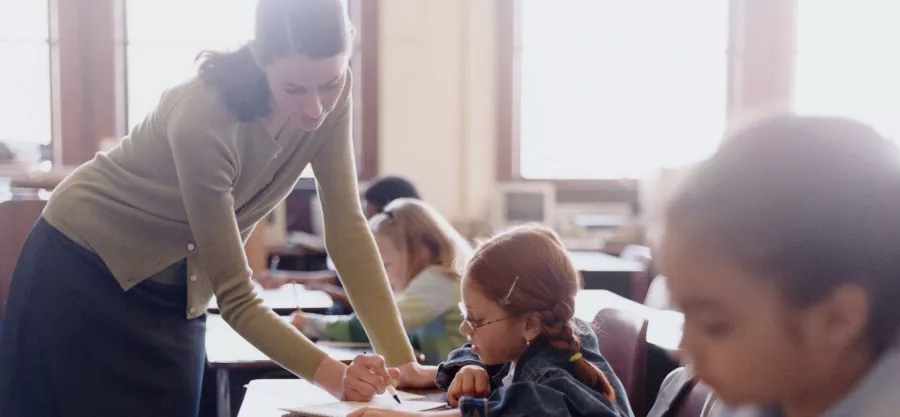It’s vital that we give purpose to what the students must learn. Let’s face it: Learning something because it’s on a test, or because it’s in the text book, isn’t purpose. But when you connect what they are learning to the world outside of school, you create your “in.”
And engaging students doesn’t require doing a soft-shoe or stand-up comedy in front of a brick wall.
Engaging students isn’t about entertainment. It’s about focusing on how to get students to care. It’s about adding a layer to the content so that they are motivated to understand concepts more independently.
And when they care about the material, they become less likely to need a letter grade to prove their knowledge. That’s right. Student engagement is the key to intrinsic motivation.
In a video for my most recent book, Just Ask Us: Kids Speak out on Student Engagement, a group of middle schoolers agree that engagement isn’t just about fun. One claims that “engagement isn’t always fun. Well, sometimes it is, but it’s also about focusing on what you’re doing and comprehending everything that’s coming into you.”

Engagement is as much about sweat as it is about smiles. Ultimately, engagement is about connecting with the material so much that a student is willing to blast through hurdles to learn more.
What’s the best way to connect students to the material? Ensure learning is meaningful. That’s where the outside world comes in. That said, I’ve long resented the concept of the “real world” and the “school world.”
Our students spend almost their first two decades of life in school, so it’s unfair to disassociate school with the world outside of it. For them, school is the real world. They should expect that the time spent with us is in preparation for the world beyond school.
So how can we align the school day with their eventual adult-aged work day? Here are some strategies to chew on. Use this list as your own launching pad for your own research. Go to conferences and seek out your own professional development by casting your net with these thoughts in mind. Become an expert in ways to give
learning purpose.
Be Transparent With the Purpose of Learning - Why are we learning this? Where does it exist in the world beyond school? What professions use this content knowledge or this skill? Give students examples of how your content area makes an impact in the world. Better yet, have the students bring in examples from their lives outside of school that showcase your content area.
 Heather Wolpert-Gawron
Heather Wolpert-Gawron
Grant Students More Choice—As adults we get choices. If we want to better align learning with the world they will enter, we must offer more opportunities for students to own their learning. As education author and lecturer Alfie Kohn says,
“Children learn to make good decisions by making decisions, not by following directions.” Offer choice in everything—from prompts, people to work with, resources and deadlines, to ways they can showcase what they know and topics of study.
Engage Students in Project-Based Learning (PBL)—PBL is the strategy that helps students to solve real-world problems—ones they often choose to tackle themselves. They do this through independent and collaborative research, design, prototyping, pitching, oral presentation, and public products.
PBL is totally grounded in authenticity. To teach using PBL requires some training. But more than anything, it involves a shift in philosophy to ensure that the learning is set in the creation, not regurgitation, of information. As I say in my DIY for PBL series, “PBL isn’t about writing a state report, it’s about creating your own state.” Students want to know how they can use what they’re learning to make an impact in the world around them.
The bottom line is this: Allow students to own their pathway through our educational system. Allow them to bring in evidence that indicates their content areas are valuable. And when students come to a crossroads, allow them to choose their own direction. Most of all, help them understand that they can make an impact on their world any time they want to start putting their training to use.
Show them examples of students who are making an impact—both big and small. Every student can develop a long-range plan in something they are passionate about, and those plans can include proof of literacy, writing, STEM, past history, and current events.
By bringing the students’ choices and interests into the classroom, you will have made your room and the learning that happens inside of it more meaningful. That translates to engagement.
Heather Wolpert-Gawron is a middle school teacher, a fellow at the National Writing Project and a faculty member of the Buck Institute for Education.


